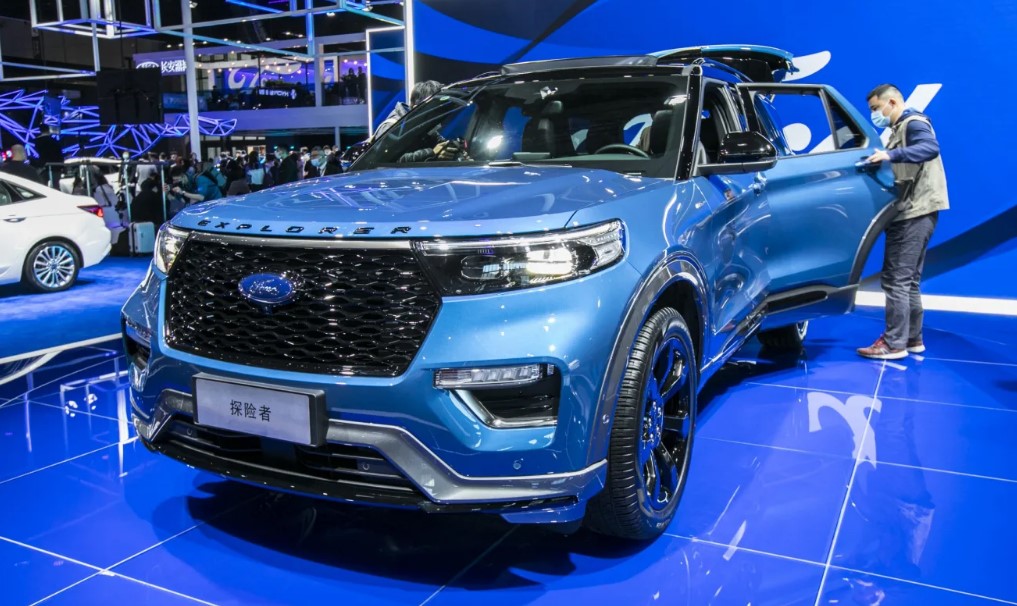2025 Ford Explorer: A Refined Midsize SUV That Still Holds Its Own
The Ford Explorer has long been a staple in the midsize SUV segment, offering a balance of practicality, capability, and comfort. For the 2025 model year, Ford has taken its popular SUV and given it a significant refresh, focusing on technology, refinement, and an even more engaging driving experience. Edmunds takes a deep dive into the 2025 Explorer, exploring its strengths, weaknesses, and overall value proposition.
A Familiar Face with Modern Touches
The 2025 Explorer’s exterior retains its familiar silhouette but features a number of subtle yet significant updates. The front fascia is sharper, with a redesigned grille and headlights that give it a more aggressive stance. The rear end also gets a makeover, with new taillights and a more sculpted bumper. The overall design is more modern and refined, aligning with the direction Ford has taken with its recent SUV offerings.
Spacious and Versatile Interior
Stepping inside the 2025 Explorer, you’ll be greeted by a spacious and comfortable cabin. The materials used throughout are of high quality, with soft-touch surfaces and tasteful accents. The front seats are supportive and comfortable, offering ample adjustment for finding the perfect driving position. The second row offers ample legroom and headroom, even for taller passengers, and can be easily folded down to increase cargo space. The third row, while more cramped, is still usable for occasional passengers or transporting smaller items.
Technology Takes Center Stage
The 2025 Explorer’s interior is dominated by a large, 15.5-inch touchscreen infotainment system that runs Ford’s latest SYNC 4 software. The system is responsive and intuitive, with easy-to-use menus and clear graphics. It features wireless Apple CarPlay and Android Auto integration, as well as a comprehensive suite of connected services.
Beyond the infotainment system, the Explorer boasts a plethora of advanced driver-assistance features. Ford Co-Pilot360 is standard across the lineup, offering features such as adaptive cruise control, lane-keeping assist, blind spot monitoring, and automatic emergency braking. Higher trim levels offer even more advanced features, such as adaptive headlights, a head-up display, and a driver attention monitor.
Engine Options for Every Need
The 2025 Explorer offers a choice of two engine options, each catering to different needs. The standard engine is a 2.3-liter turbocharged four-cylinder that produces 300 horsepower and 325 lb-ft of torque. This engine provides ample power for everyday driving, while still offering decent fuel economy.
For those seeking more power and towing capability, the optional 3.0-liter turbocharged V6 engine is available. This engine delivers a robust 365 horsepower and 380 lb-ft of torque, allowing the Explorer to tow up to 5,600 pounds. Both engines are mated to a smooth-shifting 10-speed automatic transmission.
Driving Dynamics: A Refined Experience
The 2025 Explorer’s driving dynamics have been significantly improved compared to previous models. The steering is more responsive and precise, offering a more engaging driving experience. The suspension, while still comfortable, provides better handling and control, particularly when navigating corners. The overall ride quality is smooth and refined, even on rough roads.
Fuel Economy: A Mixed Bag
The 2025 Explorer’s fuel economy varies depending on the engine choice and trim level. The 2.3-liter turbocharged four-cylinder engine achieves an EPA-estimated 22 mpg city, 29 mpg highway, and 25 mpg combined. The 3.0-liter turbocharged V6 engine sees a slight decrease in fuel economy, with estimates of 19 mpg city, 26 mpg highway, and 22 mpg combined.
Value and Competition
The 2025 Ford Explorer starts at around $38,000 for the base model, making it a competitive offering in the midsize SUV segment. It faces stiff competition from other popular SUVs such as the Honda Pilot, Toyota Highlander, and Subaru Ascent. The Explorer’s strengths lie in its spacious interior, advanced technology, and refined driving experience. However, its fuel economy could be better, and some of its competitors offer more off-road capability.
Pros:
- Spacious and comfortable interior
- Advanced technology and driver-assistance features
- Refined driving experience
- Powerful engine options
- Competitive pricing
Cons:
- Fuel economy could be better
- Third row is cramped
- Limited off-road capability compared to some competitors
Conclusion
The 2025 Ford Explorer is a compelling midsize SUV that offers a blend of practicality, technology, and driving enjoyment. Its spacious interior, advanced features, and refined driving dynamics make it a strong contender in a crowded segment. While its fuel economy could be better and its off-road capabilities are limited, the Explorer remains a solid choice for families and individuals looking for a versatile and comfortable SUV.
Detailed Breakdown of Trim Levels:
Base:
- Starting MSRP: $38,000
- 2.3-liter turbocharged four-cylinder engine
- 8-inch touchscreen infotainment system
- Cloth upholstery
- Ford Co-Pilot360 driver-assistance features
XLT:
- Starting MSRP: $42,000
- 2.3-liter turbocharged four-cylinder engine
- 10.1-inch touchscreen infotainment system
- Leatherette upholstery
- Heated front seats
- Power liftgate
Limited:
- Starting MSRP: $48,000
- 3.0-liter turbocharged V6 engine
- 15.5-inch touchscreen infotainment system
- Leather upholstery
- Heated and ventilated front seats
- Panoramic sunroof
- Bang & Olufsen sound system
Platinum:
- Starting MSRP: $54,000
- 3.0-liter turbocharged V6 engine
- 15.5-inch touchscreen infotainment system
- Premium leather upholstery
- Heated and ventilated front and rear seats
- Adaptive headlights
- Head-up display
- Driver attention monitor
ST:
- Starting MSRP: $50,000
- 3.0-liter turbocharged V6 engine
- Sport-tuned suspension
- 20-inch wheels
- Unique exterior styling
- Sport seats
Ford Explorer: A Detailed Look at Key Features:
Infotainment:
- The 2025 Explorer’s infotainment system is a highlight, featuring a large touchscreen with intuitive menus and responsive performance.
- The SYNC 4 software is user-friendly and offers a comprehensive suite of connected services, including navigation, music streaming, and voice control.
- Wireless Apple CarPlay and Android Auto integration are standard across all trim levels, providing seamless smartphone connectivity.
Safety Features:
- Ford Co-Pilot360 is standard on all Explorer models, offering a suite of driver-assistance features designed to enhance safety and provide peace of mind.
- Features include automatic emergency braking, adaptive cruise control, lane-keeping assist, blind spot monitoring, rear cross-traffic alert, and more.
- Higher trim levels offer even more advanced safety features, such as adaptive headlights, a head-up display, and a driver attention monitor.
Cargo Space:
- The Explorer offers ample cargo space, with 18.2 cubic feet behind the third row, 47.9 cubic feet behind the second row, and 81.7 cubic feet with both rows folded down.
- The second row seats can be easily folded down, providing a flat cargo floor for larger items.
- The third row is more cramped and best suited for occasional passengers or smaller items.
Off-Road Capability:
- While the Explorer is not designed to be a hardcore off-roader, it does offer decent ground clearance and available all-wheel drive.
- The optional Terrain Management System allows drivers to choose from different driving modes to optimize performance for various terrains.
- However, compared to some of its competitors, the Explorer’s off-road capabilities are limited.
Conclusion:
The 2025 Ford Explorer is a refined and capable midsize SUV that offers a compelling blend of practicality, technology, and driving enjoyment. Its spacious interior, advanced features, and competitive pricing make it a strong contender in a crowded segment. While its fuel economy could be better and its off-road capabilities are limited, the Explorer remains a solid choice for families and individuals looking for a versatile and comfortable SUV.










